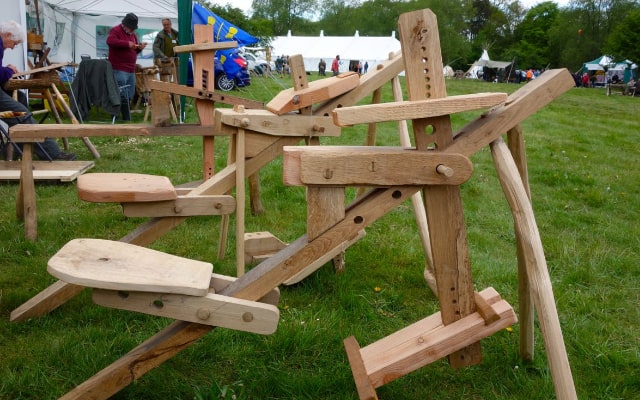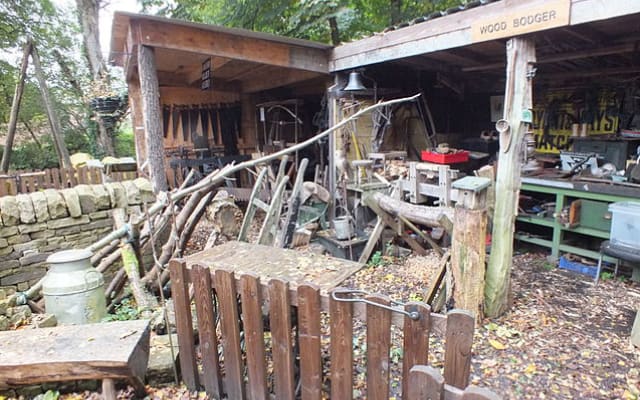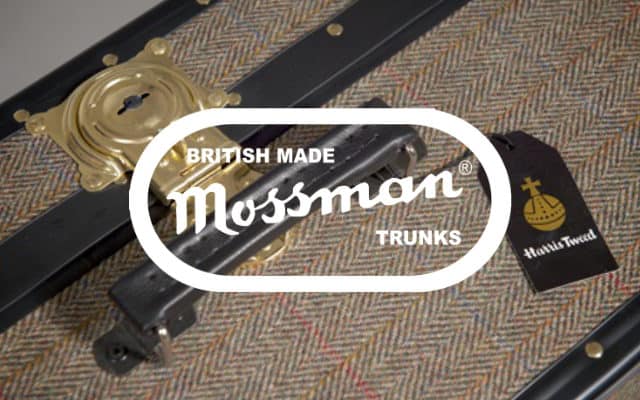Regional British Crafts: CHILTERNS
The Art of the Bodge

The Chilterns is a large area of chalk escarpment North West of London that has many fabulous qualities and histories around it. It is perhaps most famous however for its woodworking, more specifically the art of Chairmaking and ‘Bodgers’. Daniel Defoe, the man who we mentioned in our section on Sheffield also had something to say for the Chilterns. He is quoted as saying about the Chilterns that; “A vast quantity of beechwood which grows in the woods of Buckinghamshire more plentifully than in any other part of England.” “...beech quarters for diverse uses, particularly Chairmaking and Turnery wares.” The first reference to the craft of making chairs in the Chilterns was before the 1700s with the Parish register of High Wycombe making note of a ‘Turner’ around 1680. This is likely referencing someone who worked with and ‘turned’ wood as their trade and not the last name of an individual (though if it is both we applaud the irony).
A list was created in 1798 to gauge the men in the area for military service and it was noted that there were over 50 chairmakers in the Chilterns at that time. The early days of this craft wasn’t about the complete process however as the parts for the chairs were crafted and tooled in the workshop before being sent to London for final assembly. Landowners did begin to make locations available for more established workshops in the latter half of the 1800s which allowed the full process to be completed in the area, boosting the trade of the Chilterns as they could ship the completed products rather than old fashioned IKEA.
The censuses of 1851 made mention of ‘Village Chairmakers’ but these were most likely Bodgers rather than tradesmen in workshops. A Bodger was an individual who often worked and lived in the woods so they were close to the materials they used. Even from the earliest day of the craft, these Bodgers, or to give them the proper name, Itinerant Turners (Turners who wandered from place to place) made the bulk of the chair components, often turned on a Lathe (a tool for shaping wood).


Rather incredibly the skills required to turn chair pieces on a lathe also allowed the production of wooden bowls, spoons and other household items which allowed a wider distribution of the Bodgers wares. This also had the effect of providing a diverse pool of skilled labour that allowed the Bodgers to add variety to their work. They were also very eco friendly as they would sell their waste wood as kindling and firewood and even crafted exceptionally durable woven baskets from fibrous materials that were a byproduct of their trade.
The way the Bodgers worked was elegant and effective, they would buy a copse of trees from a landowner or estate owner at auction, set up a basic work site by the trees, sometimes with a lean-to shelter or shed and felled trees as needed for manufacture. Rudimentary tools such as a side axe, draw shave, wooden shave horse and pole lathe were all the Bodger needed for their work. As can be expected with such work, accidents were common and an individual at the time was known as Billy ‘no-toes’ Neville, no points for guessing why.
The most important and ingenious piece of a Bodgers arboreal arsenal was without a doubt the pole lathe. Powered by a long flexible length of sapling, the elasticity of which would bring the cord of the pole lathe back up after it was pulled down. This action would rotate the piece of wood being worked on clockwise and then anti-clockwise and so on (a little like how a ribbon dancer at the Circus can use the fabric wrapped around themselves to control their fall). Once the Bodger had completed their chair parts they sold them to factory owners for final assembly and moved on to the next job. Some Bodgers were self employed while others worked in groups and most likely had different roles in the production line.
As the industrial revolution began to grow and creep forward, the number of Bodgers in the Chilterns almost doubled, going from 186 individuals to 340 between the years of 1861 and 1881. But the Bodgers were only 1 of 3 types of chair craftsmen in the area, the others were the Benchman who would produce the seats, backs and sawn components of the chairs and the Framer who would take the components that had been crafted by the Bodger and Benchman and complete the chairs assembly.


By the early 1900s there were only about 30 Bodgers left in the Chilterns, the small population led to great relationships and fellowship between them, there was also the professional side to their interactions with prices being monitored so as to not be undersold by a drastic margin. This didn't affect the kinship of the Bodgers as those who work the land share a similar view on life and the living of it.
Working up to 60 hours a week, a Bodger's life was not relaxing, high workloads and physical labour would mean the Bodger had to be efficient and work in any weather conditions, a skilled worker could produce 144 separate parts in a day and this was not uncommon for the time. The high skill of the Bodgers and their complete dedication to the craft meant that no matter what the day was like, they would get their job done. The Simple equipment was easy to use and repair if broken and could be easily replaced if need be, such is the way of a bushman.
As with many of the originally hand crafted products of Britain, the advent of machinery meant that Bodgers soon became obsolete and fell out of style, but the tradition has held on with a few individuals still practising the old ways of chairmaking, these Bodgers are the last of their kind and only through a growing desire for handmade British products can we show that their heritage and history won’t be forgotten. Thankfully things seem to be shifting in this direction and we can only hope it continues this way.




